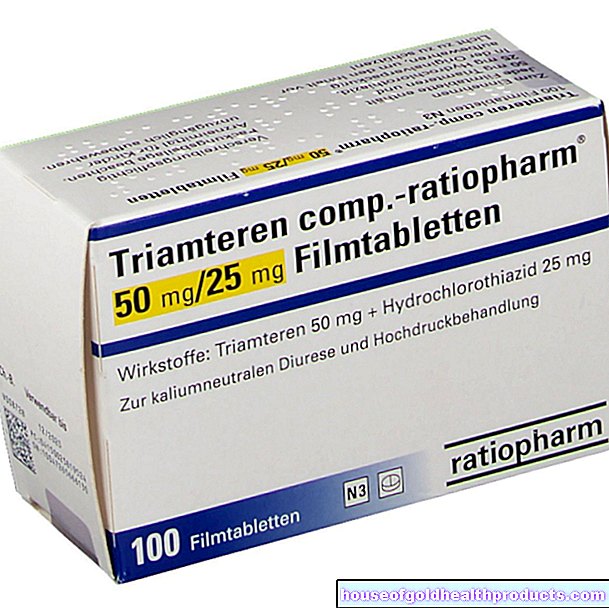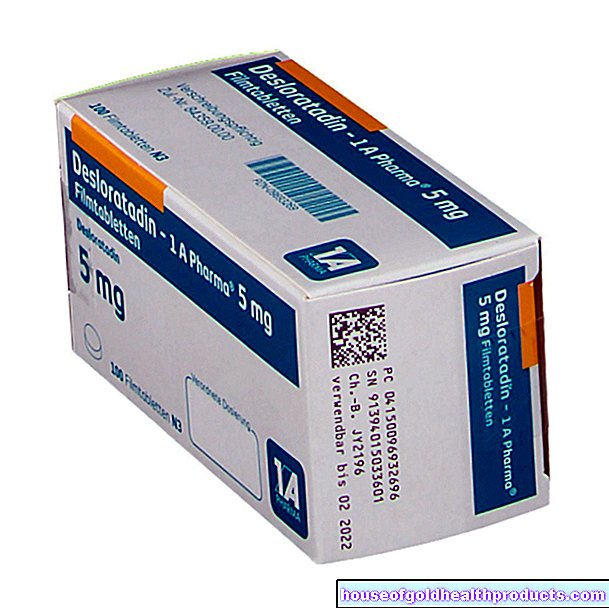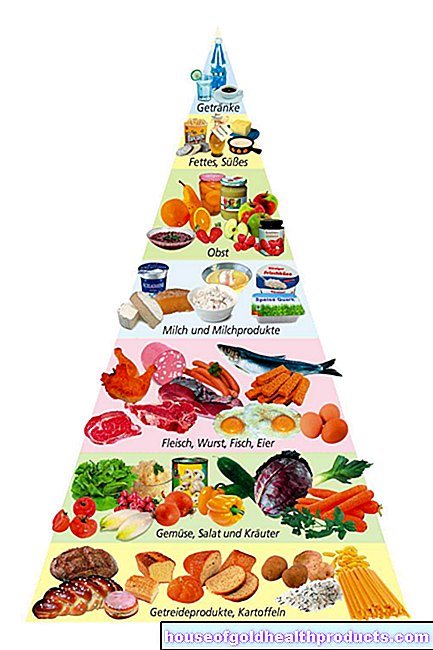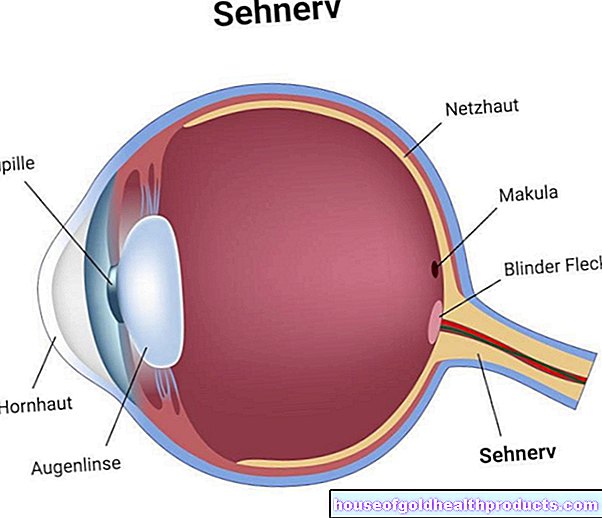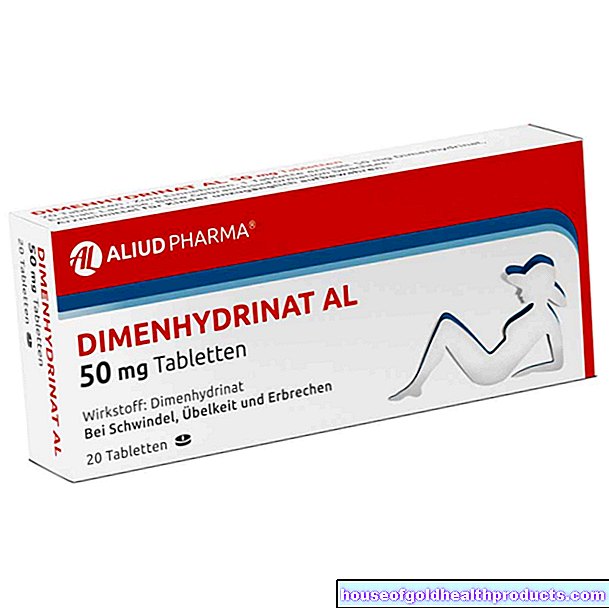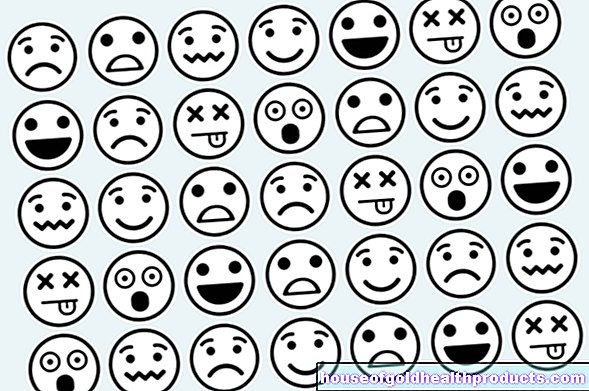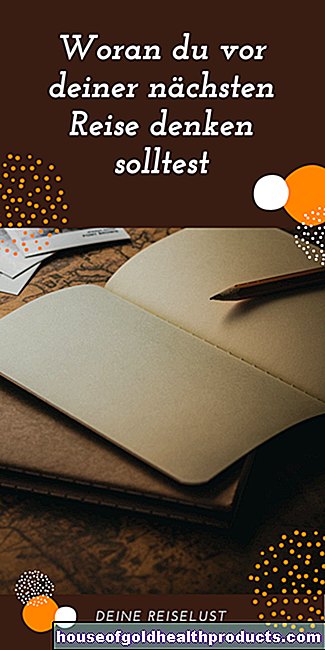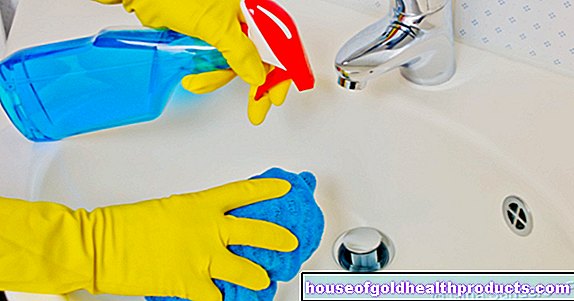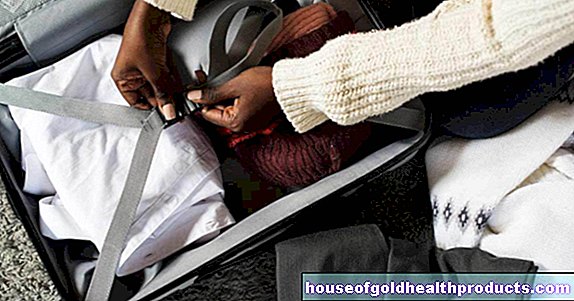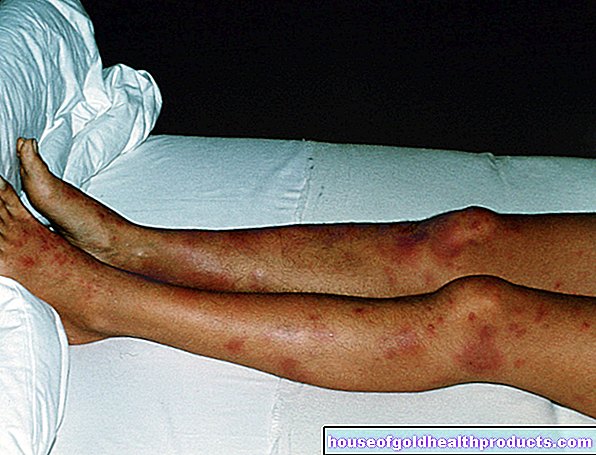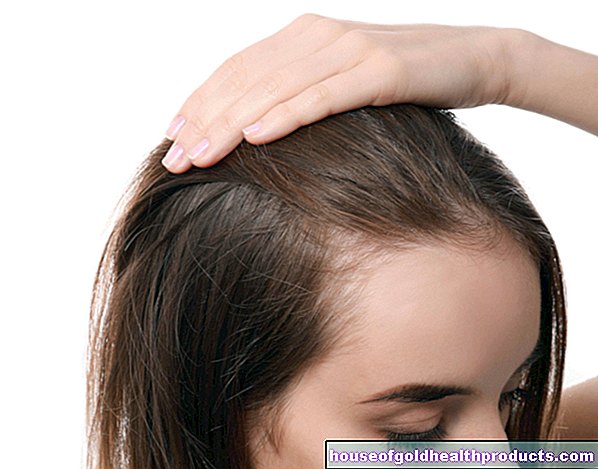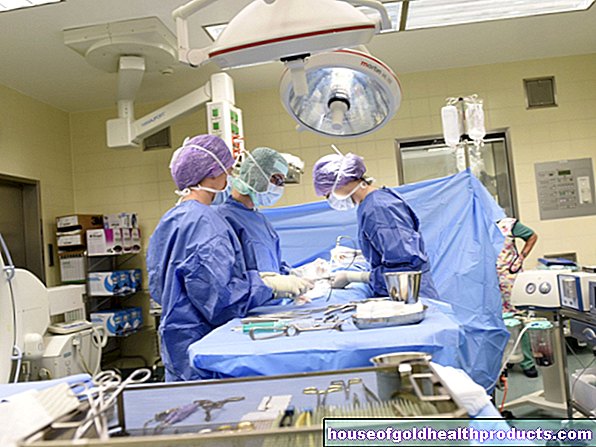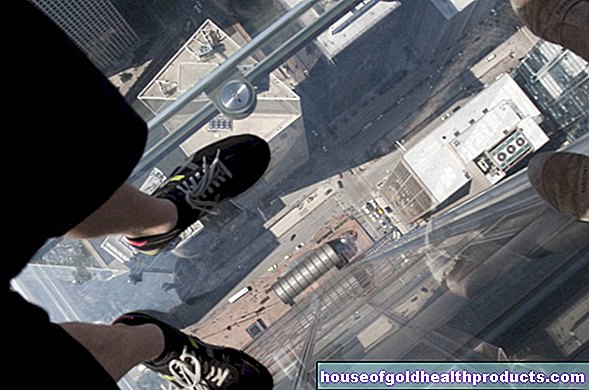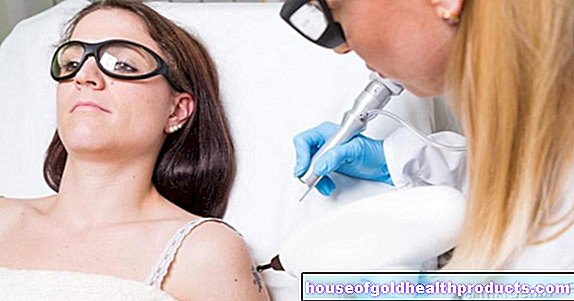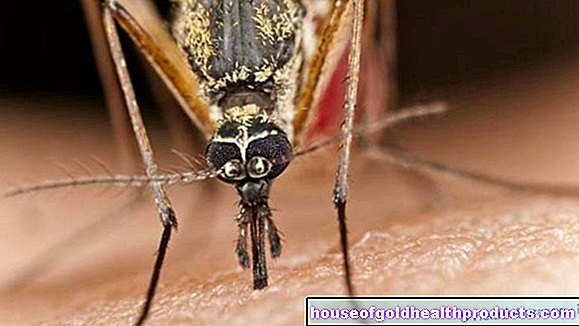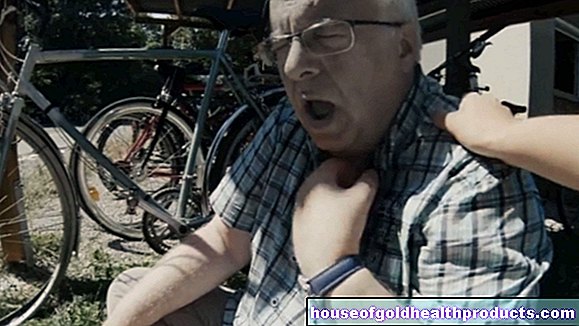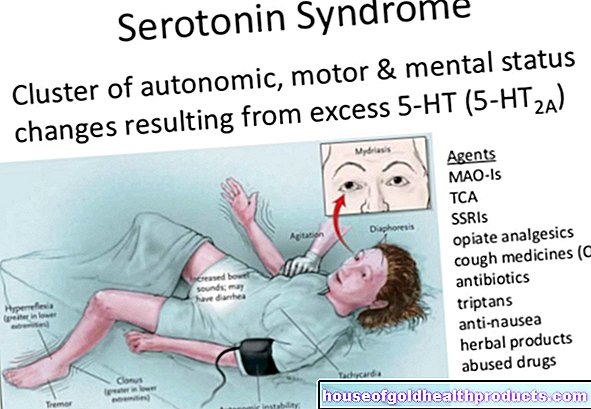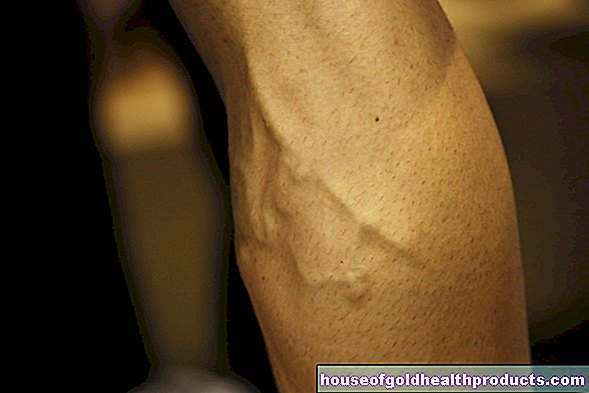How do you secure children in the car?
and Martina Feichter, medical editor and biologistMartina Feichter studied biology with an elective subject pharmacy in Innsbruck and also immersed herself in the world of medicinal plants. From there it was not far to other medical topics that still captivate her to this day. She trained as a journalist at the Axel Springer Academy in Hamburg and has been working for since 2007 - first as an editor and since 2012 as a freelance writer.
More about the experts All content is checked by medical journalists.
Why are children particularly at risk in car accidents?
Car accidents are one of the most common causes of accidents and death among children in Germany. The reason for this is often that the children are not properly seated in the car, although child restraint systems have been required by law since 1993: According to the law, every child who is younger than 12 years or less than 150 cm must be transported in an age-appropriate car seat. Children who are not buckled up or who do not ride in a suitable child seat are in mortal danger! It is not enough to hold a child on your lap or in your arms, as the energies generated when suddenly braking hard are far greater than that of an adult.
Note: Children older than 12 years or taller than 150 centimeters are allowed to ride in the car as normal (like adults). But you should always sit on the back seat and be buckled up at all times.
How do you recognize a good child seat?
The child seat must be built, tested, approved and marked in accordance with the European test standard. Two child seat standards are currently valid: the older ECE-R 44 (UN ECE Reg. 44) and the newer ECE-R 129 (UN ECE Reg. 129). Only use child seats on which such an ECE test number is attached (usually as an orange sticker)!
Child seat test standard ECE-R 44
Two versions of the test standard ECE-R 44 are currently valid: ECE-R 44/04 and the older ECE-R 44/03. According to this test standard, child seats are divided into "weight classes". They indicate the body weight for which the child seat in question is suitable:
- Group 0: from birth to 10 kg
- Group 0+: From birth to 13 kg
- Group I: From 9 to 18 kg
- Group II: From 15 to 25 kg
- Group III: From 22 to 36 kg
Despite this classification, not every child seat fits every car and every child. Make sure you take your vehicle and child with you when you buy it. Try out how well you can install the seat in your car, whether your child can simply be belted in or whether a complicated belt guide will put your patience to the test.
It is advisable to buy a combination seat that grows with you and covers several standard groups. Sometimes these are a bit more expensive at first glance, but you don't have to buy a new one for each weight class. Once you have decided on a model, let your (older) child have a say in the decision-making process. Then it better sit in it!
Manufacturers do not recommend buying used child seats. There is not always obvious damage to the seat after an accident. Nevertheless, it may then no longer offer the best possible protection for your child.
Group 0 and 0+ (birth up to 10 or 13 kg)
The following security options are available for babies and toddlers from birth up to a weight of ten (weight group 0) or thirteen kilograms (weight group 0+):
- Baby bath: This is often a carrycot that is approved for transport in the car with an additional package. It is attached across the back seat in the car. The baby should lie with its head towards the center of the car in order to protect its head as well as possible in the event of a side-on collision. The baby bath is intended primarily for newborns and premature babies: Their spine is not yet stable, so they should lie down as much as possible for the first three months - which is possible in the baby bath (in contrast to the baby seat). However, the crash loads for the baby in the carrycot are usually higher, so this safety system is only recommended if longer car journeys are absolutely necessary in the first two to three months of life.
- Baby seat: It is attached to the back seat or the front passenger seat against the direction of travel. If the car has a passenger airbag, the child seat must not be used there. Have the airbag switched off at your car dealer or transport your baby in the back seat. Depending on the approval, you can mount the baby seat in your car with a two-point or three-point belt. These seats have the advantage that they can be lifted out of the car with one handle, complete with the child. So you don't have to wake the sleeping baby to take him out of the car. Make sure, however, that a baby who is not yet able to sit up on its own does not stay in the shell too long because the hunched position will put strain on its back. Group 0 baby seats often become too small within the second half of their life when the child's head protrudes over the backrest.
Group I (9 to 18 kg)
Children with a weight between 9 and 18 kilograms (age up to approx. 4 years) can sit alone. Nevertheless, it makes sense to choose a seat with sturdy side parts that primarily support the child's head.
- The most common are seats with their own harness-belt system. The seat itself is attached to the car seat with the help of the three- or two-point belt (on some models also against the direction of travel). The child seat belt can be easily adjusted to the size of the child. Important: The belts must be as tight as possible on the child's body.
- There are also so-called impact body systems: Here the child is secured in front of his stomach by a small table. The three-point belt is guided through the impact body (as taut as possible) and thus holds the child and seat.
Please follow the installation instructions supplied by the manufacturer exactly.
Group II and III (15 to 25 kg or 22 to 36 kg)
For children of this weight group, booster seats with back or sleeping supports are mainly used in the car. The attachment is usually made with the normal three-point belt of the car. The shoulder strap should run centrally over the child's shoulder and be pulled tight again and again when the automatic retractor moves. Because the child's shoulder is only more stable from around the age of four, booster seats with back / sleeping supports should not be used with younger children. Another important point: the lap belt should be guided through large belt hooks on the booster seat so that it cannot slip into the child's abdominal area in the event of an accident.
There are also booster seats without a backrest that have a valid ECE test seal. However, many experts advise against such models because they offer practically no protection for the child in the event of a side impact. In addition, a sleeping child can easily tip over on such a simple booster seat and possibly slip out of the belt.
Child seat test standard ECE-R 129 (i-Size)
Another child seat test standard has existed since mid-2013: ECE-R 126. It applies to so-called i-size child seats (ISOFIX child seats). ISOFIX is the standardized, rigid attachment in the car to which the i-size child seat can be fixed. Such child seats may only be used in cars that either have an "i-size label" or that have received approval from the manufacturer of the child seat to use the ISOFIX points in the vehicle.
In contrast to child seats of the ECE-R 44, the i-size child seats are not based on weight classes, but on the age and size of children: The manufacturers specify the minimum and maximum body size for which a model is suitable (sometimes in combination with a weight limit). Children up to 15 months must always ride backwards or sideways in the car in the child seat.
Attention: These new child seats do not replace a conventional baby seat!
Why are airbags dangerous for children?
Airbags are designed for adults. They are inflated with such force that they can kill or suffocate a child in the passenger seat. Therefore, one should heed the following advice:
- If a child over the age of twelve is sitting on a seat with a front airbag, you should move the seat back as far as possible.
- Under no circumstances should rear-facing baby or child seats be placed on the front passenger seat if there is a front airbag there (unless you switch it off - see below). Forward-facing child seats can usually be fitted when the front passenger seat is pushed to the rearmost position (note the warning notices on the child seat and in the operating instructions for the car). However, some vehicle manufacturers generally recommend not to attach a baby or child seat to the front passenger seat - regardless of whether it is facing forwards or backwards.
- In newer cars it is possible to switch off the airbag. In this case, you can of course use the passenger seat. But remember to reactivate the airbag if you are accompanied by an adult. And conversely, don't forget to turn it off again if you want a smaller child to sit there.
- In general, the ADAC recommends installing baby and child seats on the back seat.
If your car has side airbags, you should make sure that the child does not fall with their head sideways into the effective area of the airbag when sleeping.
What other rules should apply in the car?
- Check the child seat and its attachment before every journey.
- Only seat the child directly in the seat. Do not use an additional cushion.
- Pull the belt taut so that it fits snugly against the child's body.
- Set a good example and always wear your belt, even over short distances.
- Rest in the car is important. Screaming and fidgeting distract the driver. Explain to your child why they should be quiet.
- If you're driving alone with a kid who gets nagged or wants something, stop and take a break.
- Only an adult should open a child's seat belt.Do NOT teach the child how to open a child seat belt, otherwise you can never be sure that the child might not loosen the belt on their own while driving.
- If your child has loosened or opened their seatbelt, move to the side and make it clear to the child that they can only continue when everyone is buckled up. If your child opens his belt frequently, swap the buckle for another one that the child cannot open on its own.
- There should be no heavy, loose objects in the car, as these could hit the occupants in the event of sudden braking or a rear-end collision. Luggage should only be stowed in the trunk.
- Never leave your child strapped in their child seat unsupervised, as they can strangle themselves with the seatbelt when they wind out.
- Always let your child get out on the sidewalk side.
